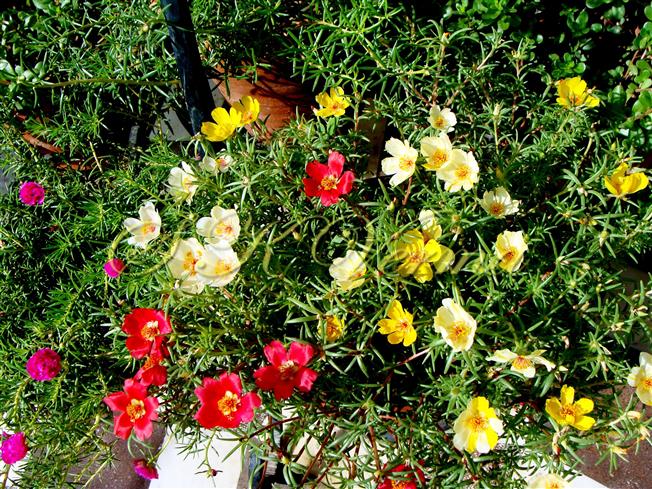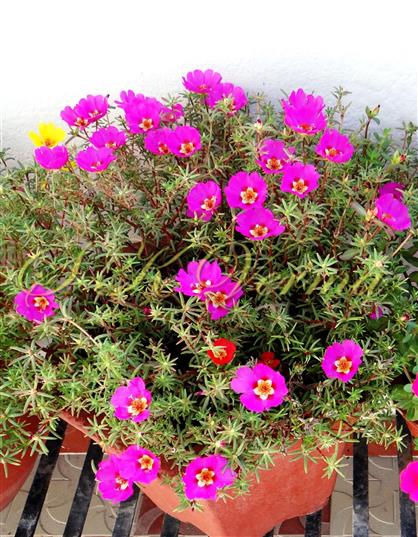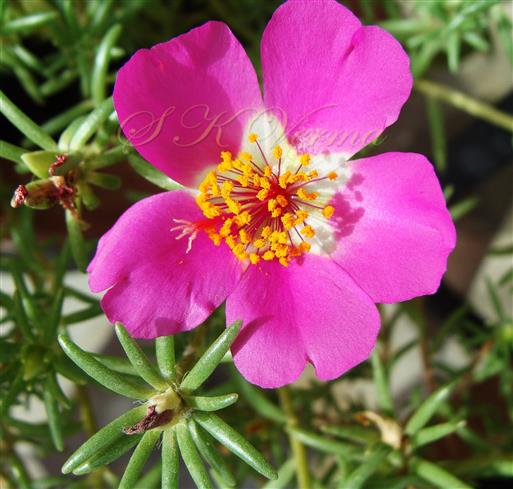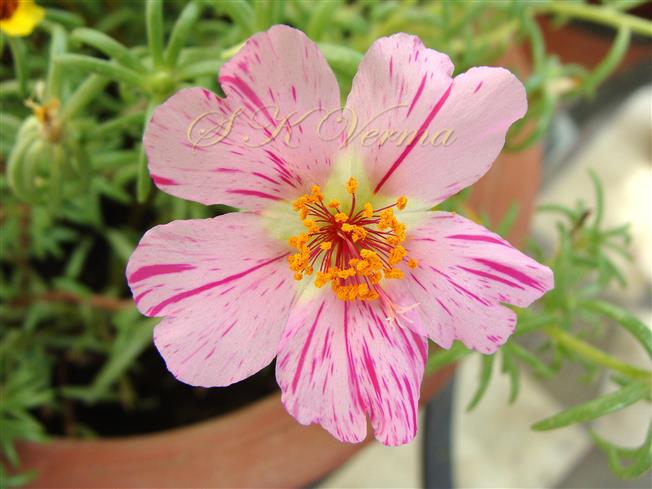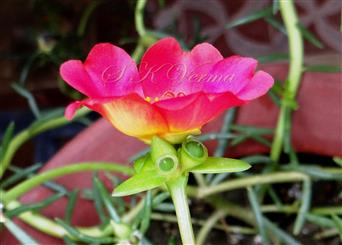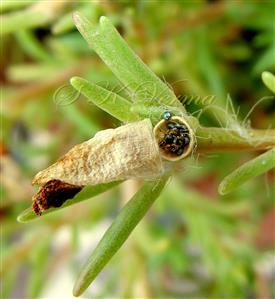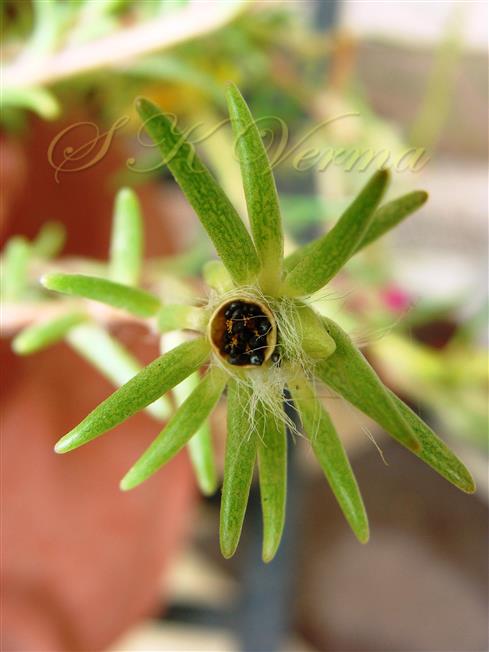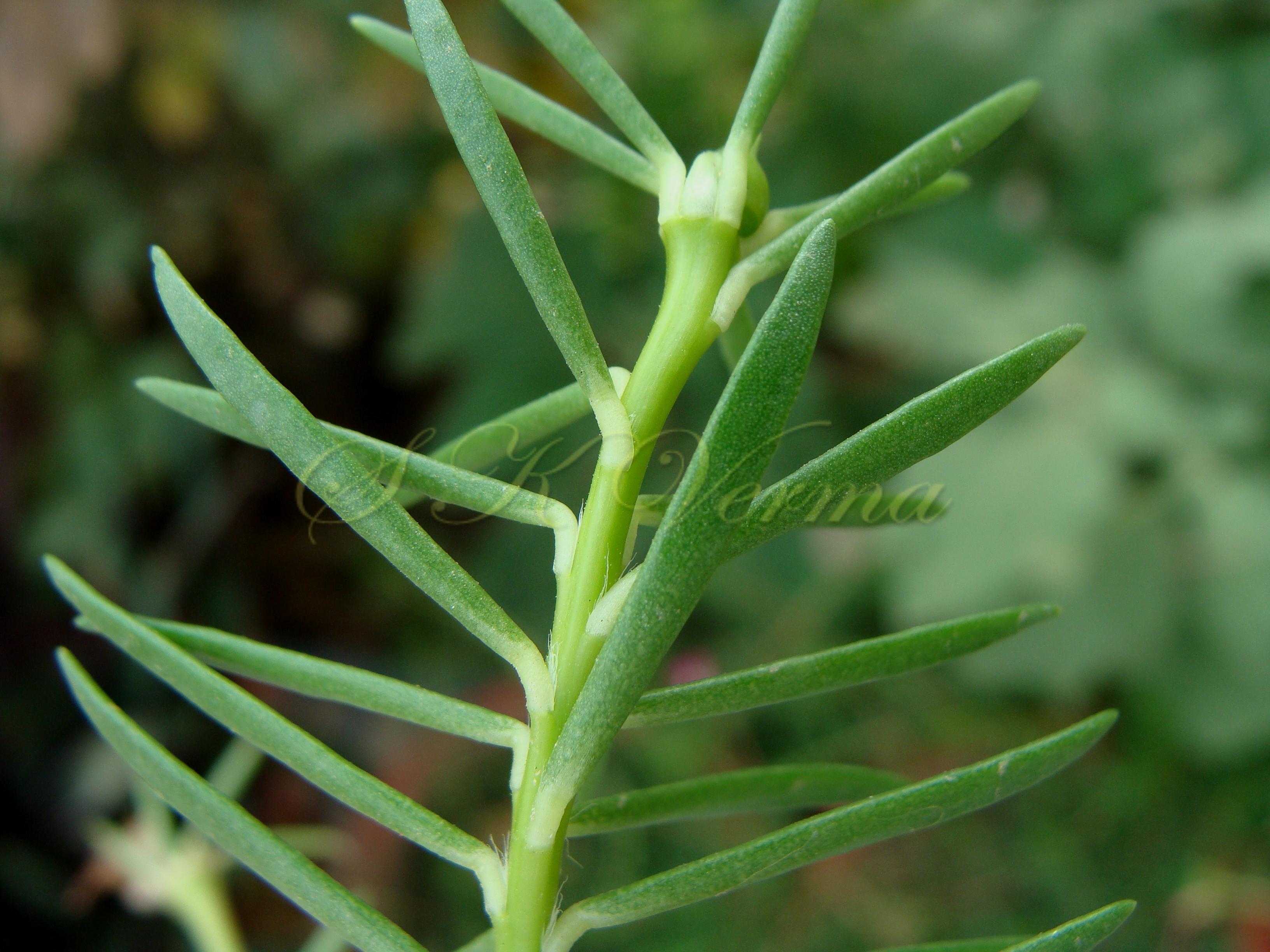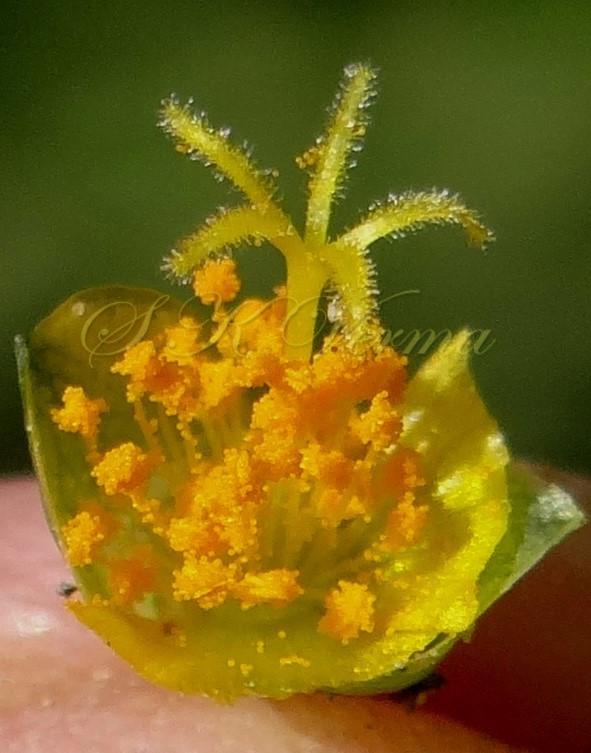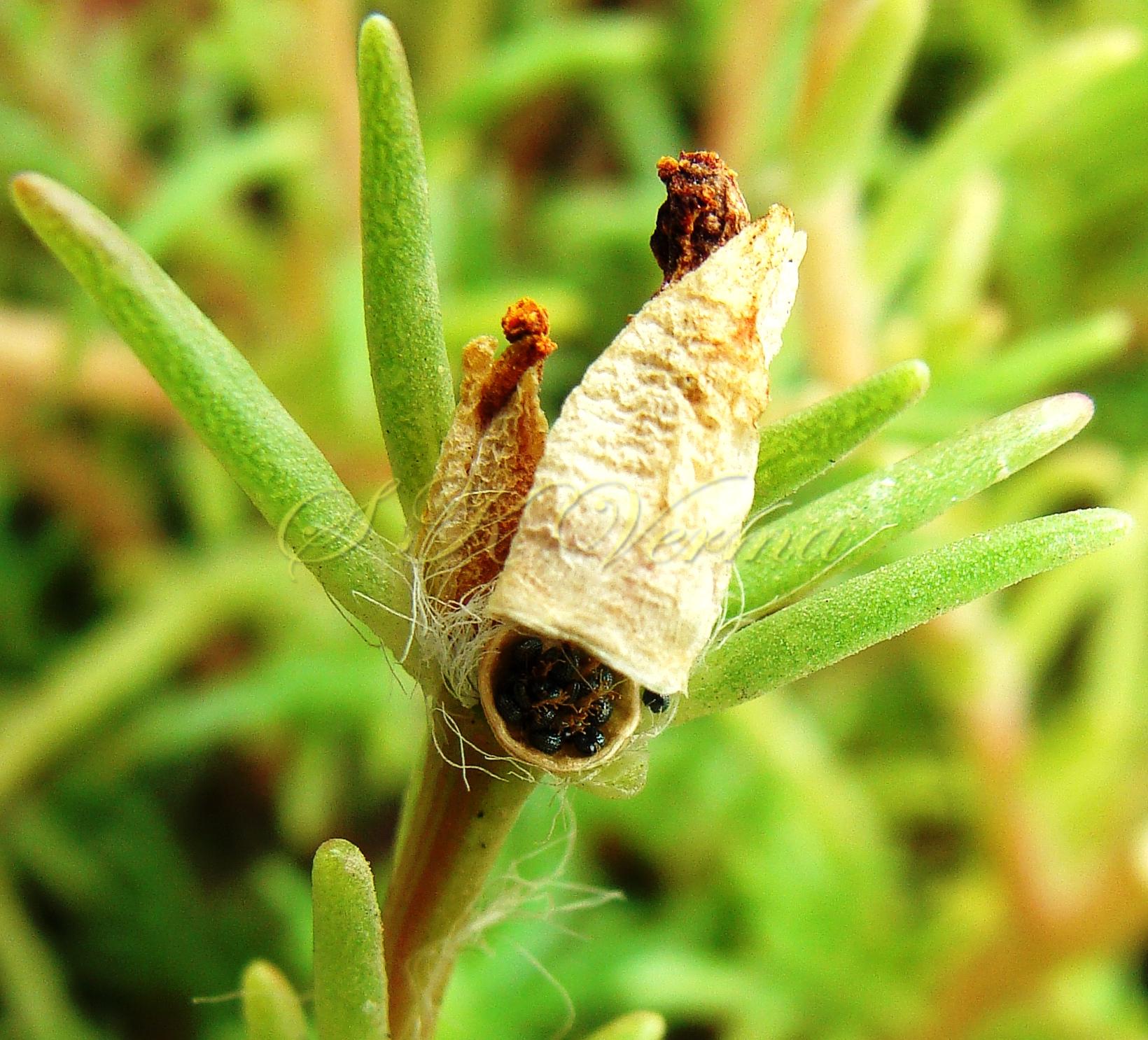PORTULACA
Portulaca L., Sp. Pl. 1: 445. 1753; Gen. Pl. ed. 5: 204. 1754; DC., Prodr. 3: 351. 1828; Benth. & Muller, Fl. Austr. 1: 168. 1863; Dyer in Hook. f., Fl. Brit. India 1: 246. 1875; Pax & Hoffm. in Engler, Pflanzenfam. 16 c: 246. 1934; Von Poellnitz, Feddes Rep. 37: 240. 1934; Walters in Turin et al., Fl. Europ. 1: 114. 1964; Fl. China @ eFloras.org 5: 442; Metthews, Fl. North Amer. @ eFloras.org 4: 496; Fl. Pak. @ eFloras.org
Diffuse, annual or perennial, often trailing or ascending, usually glabrous and succulent herbs. Nodes or leaf axils with scales, bristles and/or hairs, sometimes short or inconspicuous. Leaves simple, alternate or opposite, sometimes subopposite; the uppermost crowded to form a sort of involucre below the flowers, flat or terete or semiterete, fleshy, stipules scarious or modified into a bunch of hairs, rarely absent. Inflorescence a terminal fasciculate cyme or flowers solitary terminal, surrounded by involucre of leaves. Flowers bisexual, actinomorphic, sessile, perigynous, usually pentamerous, showy, variously coloured; bracts entire or modified into hairs. Sepals 2, fused at base to form a very short tube partly adnate to ovary and lobes caducous. Petals 4 or 5 (-8+), free or united at the base, inserted on the rim of calyx tube, marcescent. Stamens (4-) 6-40 (-100), free or united at the base, inserted on rim of calyx tube adnate to petals, rarely epipetalous. Carpels usually more than 3, (3-6), syncarpous; ovary ovoid, half adnate to calyx, semi-inferior; ovules many, on free central placenta; style with 3-8 elongated and radiating stigmas. Fruit brittle with thin membranous wall, subglobose to globose or oblong conical, unilocular capsule with circumscissile dehiscence. Seeds numerous, minute, reniform or lenticular, testa shining, aculeate, tuberculate or somewhat papillate.
152 species
Portulaca grandiflora
Portulaca grandiflora Hook., Bot. Mag. 56: t. 2885. 1829; Maheshwari, Fl. Delhi 70. 1963; Hutch & Dalz, Fl W. Trop. Afr. 1(1): 137. 1954; Bailey, Stand. Cyclop. Hort. 3: 2766. 1950; Walters in Tutin et al., Fl. Europ. 1: 114.1964; Jafri, Fl. Kar. 122. 1966; Chittenden, Dict. Gard. 3: 1647. 1951; Fl. North Amer. @ eFloras.org 4: 498; Fl. Pak. @ eFloras.org
Annual or perennial herbs. Stem prostrate with upright branches, up to 30 cm long, rooting at nodes; roots fibrous. Stem and branches cylindrical, smooth, glabrous, purplish green. Leaves alternate or irregularly scattered, subsessile, terete to hemispherical, linear oblong or lanceolate, +/- 20 mm long, 2-3 mm broad, fleshy, glabrous, entire, apex acute or subacute; stipular hairs few in axils, 2-3 mm long, white. Inflorescence 1-3(-4)-flowered terminal cymose sessile clusters subtended by dense growth of hairs and 5-8 leaved involucre. Flowers large, 2-5 cm across, actinomorphic, bisexual, perigynous, yellow, purple, pink, scarlet or white. Sepals 2, slightly unequal, united at base into a short tube, partly adnate to ovary, broad ovate, 6-7 mm long, 3.5-5 mm broad, acute. Petals 5 or its multiples, inserted at rim of calyx tube, united at base, obovate, pale brown or yellow spotted at base, 12-18 mm x 10-14 mm, emarginate. Stamens numerous (40 or more), united at base, inserted on rim of calyx tube and adnate to petals; filaments unequal, 3-5 mm long scarlet-purple in colour; anthers small, 0.5-0.75 mm long. Carpels 5, syncarpous, ovary ovoid, half-adnate to calyx, semi-inferior, many ovules on free central placenta; style 6-7 mm long; stigmas 5-8, linear, 2-3 mm long, recurved. Capsule oblong, obtuse, ca. 5 mm x 3 mm, unilocular with circumscissile dehiscence. Seeds minute, steel grey, orbiculate or elongate, 0.75-1 mm diameter.
Common Names: Rose Moss, Portulaca; Dhup- Khiri, Dopehar Khiri (Hindi)
